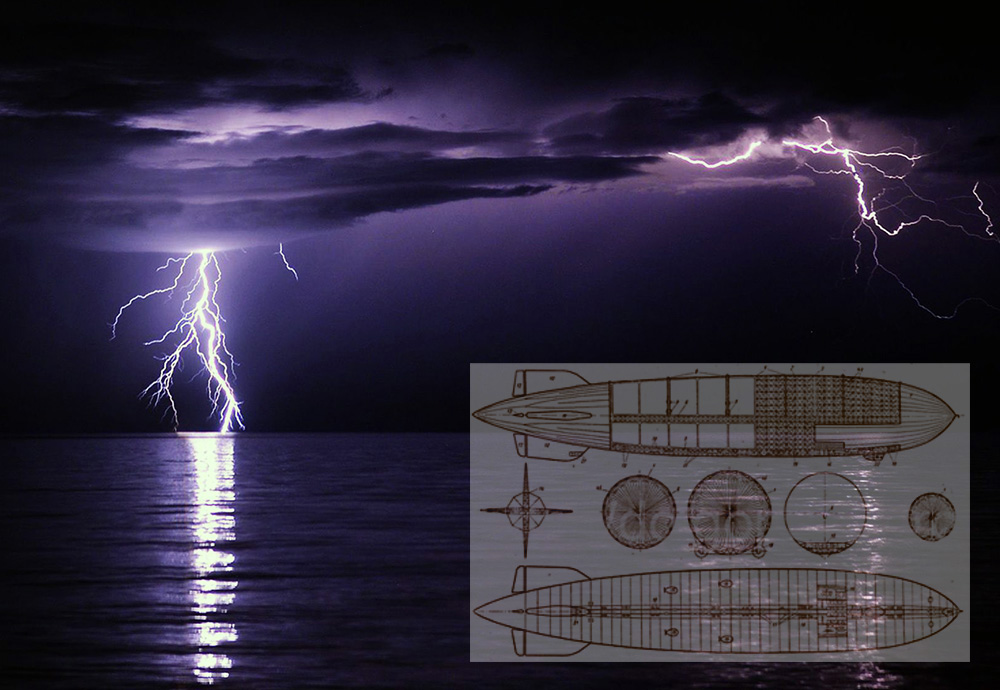





 |
 |
 |
 |
 |
 |
 |
The Hindenburg The Laws of Physics The presented elements of the infamous event tell a different story than that of sabotage, as careful scrutiny of the situation seems to indicate that the explosion was an engineering accident waiting to happen. Prior to the explosion, the Hindenburg was sloping to the rear. Dumping/adjusting the zeppelin’s ballast,1 while moving crew members to the nose of the airship, did not correct the back-heavy pitch of the vessel, hinting that at least one of the hydrogen cells had been damaged. Eyewitnesses on the ground reported seeing a “fluttering” of the aeronautical cloth at the top of the airship near the vertical fin,1 indicating the presence of hydrogen in areas of the ship where there should have been none. The airship was operating in highly charged atmospheric conditions,1 and the flight was delayed from landing for over two hours due to high winds, rain, and thunderstorms.1 When the airship was finally cleared to land, unpredictable high wind patterns introduced stresses on the airframe of the zeppelin that were above the tolerances that the ship was designed to withstand,1 and this may have led to the puncture of a hydrogen cell due to a malfunction of the metallic superstructure. |
| Last | | | Next |
| Sources
1
National Geographic
Seconds From Disaster: The Hindenburg
YouTube.com/watch?v=KowvaxobrQg&t=30s
2 Natalia Mielczarek Rhetorical Criticism: Perspectives in Action - Visual Rhetoric GoodReads.com/book/show/59589098-rhetorical-criticism Photos Jessica Lauren Pinterest - Electric Storm Pinterest.com/pin/332070172504741863/ GlobalSecurity.org LZ-129 Hindenburg GlobalSecurity.org/military/world/europe/lz-129.htm |
 |
X |
 |
|
| © Jessica Lauren | |
 |
X |
 |
|
| © GlobalSecurity.org | |
| Presented Elements |
| The physical attributes of an image, including its size, media, colors, shapes, and materials used to produce it.2 |